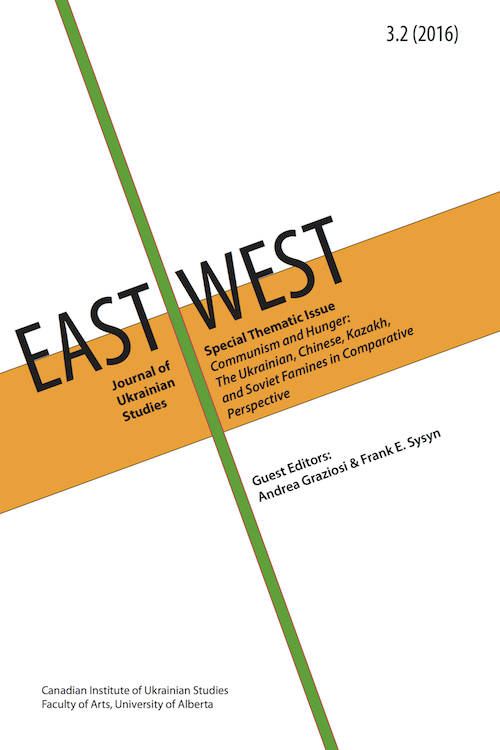Food Shortages, Hunger, and Famines in the USSR, 1928-33
DOI:
https://doi.org/10.21226/T26C7NАнотація
This paper examines policies implemented in stages from 1928 and the multi-causal phenomena that resulted in the deaths of some 6.5 to 7 million people, the majority in Ukraine and the Kuban as well as Kazakhstan, during the man-made Soviet famines of the early 1930s. These famines took on distinctively separate trajectories after the autumn of 1932 when Stalin singled out Ukraine, the largest grain-producing region of the USSR. The Kazakh famine resulted from the devastation of the traditional nomadic Kazakh economy in a misguided effort to make that region a main source of meat for the Soviet Union. Other regions—notably the Middle Volga and Central Chernozem Regions—also suffered. These events were largely driven by Soviet attempts to make the countryside a domestic colony that would provide food resources for the country’s accelerated industrialization. This is particularly evident in the manner Soviet authorities rationed and distributed food.Завантаження
##submission.downloads##
Опубліковано
Номер
Розділ
Ліцензія
Авторське право (c) 2017 East/West: Journal of Ukrainian Studies

Ця робота ліцензується відповідно до Creative Commons Attribution-NonCommercial-NoDerivatives 4.0 International License.
Ⓒ 2023 Canadian Institute of Ukrainian Studies, University of Alberta, and EWJUS (East-West: Journal of Ukrainian Studies). For permissions and other inquiries, please contact the Editor-in-Chief: bilenky@ualberta.ca
Author's Rights
The Author transfers and assigns to EWJUS (East-West: Journal of Ukrainian Studies) and the CIUS (Canadian Institute of Ukrainian Studies), during the full term of copyright and any extensions or renewals of that term, all copyright in and to the Work published in EWJUS by the Author, including but not limited to the right to publish, republish, transmit, sell, distribute and otherwise use the Work in electronic and print editions of EW:JUS and in derivative works throughout the world, in all languages and in all media now known or later developed, and to license or permit others to do so.
Notwithstanding the above, EWJUS grants back to the Author the following distinct rights:
- The non-exclusive right to use, reproduce, distribute, publicly perform, and publicly display the Work in any medium in connection with the Authors’ academic and professional activities, including but not limited to teaching, conference presentations, and lectures.
- The non-exclusive right to create derivative works from the Work.
- The non-exclusive right to make full use of the Work in future research and publications, including the right to republish the Work in whole or in part in any book that one or more of the Authors may write or edit after the Work has appeared.
The Author represents and warrants that the Work is the original work of the Authors and that it does not violate or infringe the law or the rights of any third party and, specifically, that the Work contains no matter that is defamatory or that infringes any literary or proprietary rights, intellectual property rights, or any rights of privacy. The Author also warrants that he or she has the full power to make this agreement, and if the Work was prepared jointly, the Author agrees to inform the Authors of the terms of this Agreement and to obtain their written permission to sign on their behalf. The Author agrees to hold the Journal harmless from any breach of the above-mentioned representations.
Works published by EWJUS are licensed under a Creative Commons Attribution-NonCommercial-NoDerivatives 4.0 International License. Under the terms of this license:
- You must give appropriate credit, provide a link to the license, and indicate if changes were made. You may do so in any reasonable manner, but not in any way that suggests the licensor endorses you or your use.
- You may not use the material for commercial purposes.
- If you remix, transform, or build upon the material, you may not distribute the modified material.




